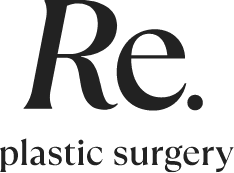Fat transfer breast augmentation is very topical at the moment, however this procedure has been around for quite some time.
I once met one of the pioneers of the technique, Dr. Roger Khouri, a plastic Surgeon in Miami, who used a suction cup technique to expand the breast and make it more receptive to fat graft take.
To borrow, (and slightly modify) a line from the movie ‘The Social Network’ about Facebook. If Fat grafting to the breast was a good technique… Then it would be a good technique.
Firstly, let’s explore what a fat graft actually is.
A fat graft is no different to any other grafted tissue. It is a common and basic plastic surgery technique where tissue is taken from one site of the body and placed into another site and is dependent on the new site to develop a blood supply. It is literally one of the first dictums you learn as a plastic surgery trainee – so this is not a fancy, modern, or highly technical procedure.
The tissue needs a blood supply and without a blood supply, the tissue dies. This is the main problem with fat grafts to the breast. Breast implants not being tissue, does not require a blood supply.
While there has been some popularity among a small number of surgeons overseas, fat grafted breast augmentations have never enjoyed any popularity in Australia. Personally, I am not sure why surgeons in other parts of the world have persisted with the technique, while here in Australia surgeons tend to stick to operations with higher success rates.
Fat grafting was popularised by Sydney Coleman, a Plastic Surgeon in New York who used fat injections in the face. Surgeons then applied those principles to the breast; the problem is the breast behaves very differently to the face, and the volumes of fat needed are much higher.
I don’t believe fat grafting for breast augmentation is a strong or effective technique.
The first problem with a fat graft is that it is a liquid, so it provides no shape to the breast. This is important for women seeking breast enhancement as they present not only with a volume concern but also wanting an improved breast shape.
When comparing their before and afters, they want to see cleavage lines, under boob, side boob and sometimes upper pole fullness. Breast fat grafts cannot provide shape because it has no shape itself. If you poured a fat graft onto a table it would form a puddle.
The next issue is volume. You cannot add a significant volume to a breast with a fat graft. There are very few women who come and see us for breast enhancement only wanting an increase of 50mls or less.
As I explained earlier, any graft needs to achieve a blood supply and you cannot fill a breast up with an endless amount of fat and expect it to survive.
Let me give two examples. Think of a sponge you would use in the kitchen. Imagine it is a small breast – then imagine pouring a litre of water on that sponge. How much would be retained and how much would spill onto the benchtop? The answer is most of the liquid will spill out which is what happens when you overfill a breast with fat.
A more academic way to explain is to imagine a graph, with fat volume along the horizontal axis and fat survival along the vertical axis. At low volumes, fat survival is very high, maybe up to 80-90%, but as you move along the fat volume axis the amount that survives becomes increasingly lower.
The last problem is that almost 100% of breast augmentation patients have no donor site. Specifically there is nowhere on their body with excess fat to harvest. Now we have heard of surgeons suggesting to patients to “fatten up” before their surgery. This makes no sense, because when you then lose weight, the fat in your breast will simply disappear.
Why I believe fat grafting breast augmentation is a potentially dangerous technique.
When the fat doesn’t survive it forms small oil cysts around the breasts which will make your breast feel lumpy. Some of those lumps will be absorbed by the body but some will not.
The main concern however around leaving deposits of half survived and half dead lumps of fat in your breast is that it can make mammograms difficult to interpret. Imagine you present for a mammogram and the radiologist sees a suspicious area. They then look at your history and see that you had fat grafting to your breast and make the assumption that the lesion is just part of the fat graft.
In most cases that may be correct, but in some cases that suspicious area may well be the start of a breast cancer which gets missed because your mammogram was difficult to read.
The last issue with fat grafting to the breast is donor site morbidity. This refers to the defects left behind where surgeons take the fat from. As we said earlier, these women are usually quite thin, so fat supplies are sparse and areas such as the abdomen and thighs where the fat gets taken from are left with contour irregularities, loose skin and dimpling. These problems are virtually impossible to correct.
But it is not all bad. Fat grafting to the breast in small amounts is useful in conjunction with cosmetic breast surgery. Volumes in the range of 10-15cc per breast virtually all survive. We commonly use fat grafts for particularly thin women undergoing breast augmentation to enhance the medial cleavage or provide additional soft tissue coverage to the implant to prevent the appearance of wrinkles and ripples. Another occasion where small fat grafts to the breast area can be useful is with minor breast asymmetries or contour deformities. It can also be useful in women undergoing a breast lift but wanting some upper pole fullness. This can be done at the time of the lift.
Now that we have explored the fat grafting for breast augmentation, I invite you to book a consultation to explore longer lasting and effective breast procedures/solutions.




